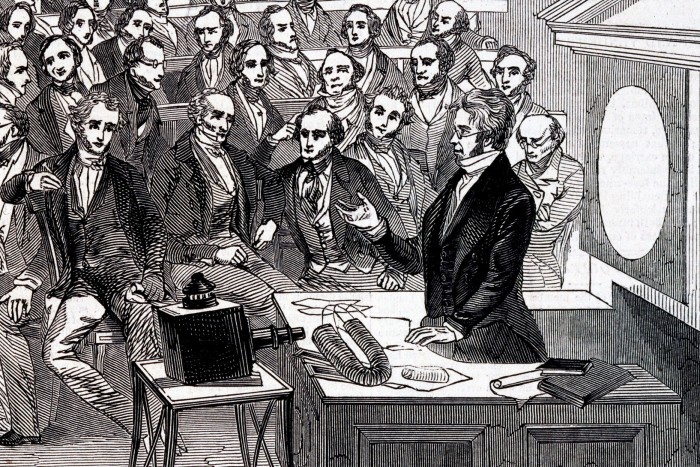[ad_1]
The UK’s Royal Institution, the London-based organisation founded more than 200 years ago to promote scientific research and education, is seeking to put a troubled recent past behind it and reinstate itself as a “home for science where everyone will feel welcome”.
The organisation’s new management team will launch a five-year strategy on Thursday, to enhance its mission to “bring the public and scientists together to share their interest and passion for science.”
The relaunch follows an overhaul at the top of the organisation after the arrival of a new executive team and board of trustees last year. They aim “to write a new chapter” in the organisation’s history, Sir Richard Catlow, the RI’s chair, said.
This will include reviving plans to make better use of the organisation’s neoclassical headquarters in the Mayfair district of London, which dates back to 1799.
At the same time, the institution’s director Katherine Mathieson, who joined from the British Science Association, the UK’s other national organisation promoting science to the public, will focus on providing managerial stability and strengthening its finances. She is the fourth director in the last five years.

“We’re projecting a deficit budget this year and next, but we have diverse income streams and our strategy is scalable,” she said. “We continue to use our resources to make a charitable impact and we plan to increase that as we grow our support.”
The organisation is still recovering from the effects of the coronavirus pandemic. This included the temporary closure of the historic 420-seat lecture theatre, which has become familiar to TV audiences for the televised Christmas lectures.
In the 19th century it was the venue of choice for leading scientists to announce discoveries. For example Michael Faraday revealed photography as a practical proposition in 1839, while JJ Thomson announced the existence of a new fundamental particle, later called the electron, in 1897.

Membership, which consists mainly of people wanting to attend regular science events, had fallen to 3,500 from 4,500 pre-pandemic but was growing again, according to Mathieson.
She said demand for in-person events was “increasing strongly month-by-month,” while she was also looking to expand the RI’s outreach activities, which include the country’s largest programme taking science shows to schools.
The institution extended its online reach during the pandemic, building a new livestream programme and growing its YouTube channel to 1.34mn subscribers.
The Grade 1 listed headquarters is in good condition following a £22mn refurbishment more than a decade ago when cost overruns plunged the RI into a financial crisis from which it took several years to recover.
Mathieson said the next step was to improve the building’s energy efficiency using a £4.35mn grant from the Greater London Authority. The project will focus on its heating, ventilation, roof, walls and windows to reduce energy usage, while preserving the historic character. “We want to be an exemplar of what can be achieved with the older building stock that is so prevalent in London and throughout the UK,” she added.
[ad_2]
Source link

